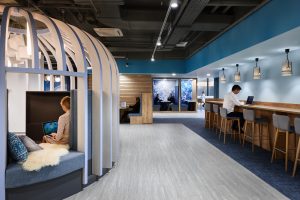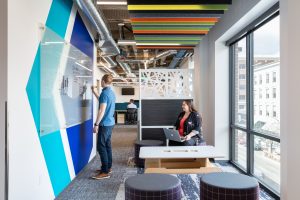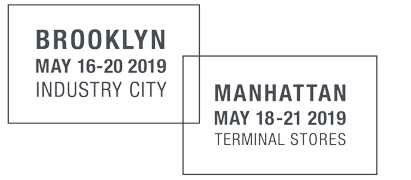Tarkett Presents Altered States Discussion at WantedDesign
We’re so excited to gather for WantedDesign 2019, where we’ll hear from some of the industry’s top thought leaders about what’s on the horizon for design professionals. One topic we’re particularly anxious to learn more about is Tarkett’s new Altered States CEU regarding the future of consciousness in our society and its impact on design. Here’s a conversation we had with Chris Stulpin, chief creative officer for Tarkett North America, to learn more.

WantedDesign: Altered States is such an intriguing title for this body of work. What exactly does it mean?
Stulpin: Altered States is an inspiring study on the role of design in impacting cultural consciousness of ourselves, our community and our spaces. Within the discussion, we examine five up-and-coming cultural drivers and data around them, through the lens of:
1) The current state of the human condition; 2) Communities in flux; and 3) The evolution of place.
The goal is to review our current state of consciousness, and provide insights for personal development, the new connectivity and a potential blueprint for a happier workplace.
WD: You’ve organized the discussion into three key areas: SELF, SOCIAL and SPACE. Can you tell us more about that?
Stulpin: SELF, SOCIAL and SPACE basically capture the three main components that we, as designers, consider in every project. We think about how individuals will feel and function within our designs. We think about how people will collaborate and interact with one another, and we think about how elements of the physical space will support and accommodate people, both individually and collectively.
In looking at these three components, we examine the current states of SELF-consciousness, SOCIAL-consciousness, and SPACE-consciousness within our society, and make recommendations for how we might improve in these areas toward happier, more productive workplaces.

WD: Let’s start with the five cultural drivers that you say are influencing our current and future states of consciousness. Can you give us an overview of those?
Stulpin: Sure, Technology and the Happiness Paradox discusses the current state of happiness and contentment in our society, and I’m sure it’s no surprise that we’re not doing so well in that area. New research suggests the more we seek happiness, the less happy we actually are, and our constant use of technology is causing us to struggle even more.
With our current climate of fake news and political dissonance, the Reputation Economy covers the national conversation around our values as a society—and how brands are stepping in as leaders in these topics.
Diversity of ONE goes over the increasing importance of diversity, equity and inclusion. This is a topic that Tarkett will be spending a great deal of time on over the next several years, resulting in specific recommendations for ways A&D firms can better represent a diverse clientele. Improving diversity in our workplaces has historically been a check-the-box activity around broad demographic groups. But there is now a growing effort to see the diverse characteristics and experiences of every individual, outside of our visible differences. The new challenge with this will be the unintended side effect that our age of inclusivity can actually become a new way of breeding divisiveness.
Did you know that between 2007 and 2013, more than 80% of employment growth was in the new suburbs and exurbs. We refer to this concept as Spatial Economics—the idea that advances in transportation and technology are making distance much less expensive. This allows people to live further from city centers, and enjoy the abundant space of a rural town, combined with many of the employment options, goods and services once available only in cities.
Finally, Designing for Deconstruction looks at the next evolution in healthy, sustainable materials for both people and the planet. We’ll place more and more focus on circular economy and carbon neutrality in the next several years. New innovations in this area are going to make the next decade incredibly exciting for the industry.

WD: Why do you think design professionals should be interested in learning more about Altered States?
Stulpin: In a recent study, the #1 concern among A&D professionals was being relevant in the future. So our peers were expressing a need to better predict cultural and design trends that are coming, in order to be ready for clients’ changing needs and expectations. Our goal with Altered States is to equip design professionals with information that helps them understand what we all must do to remain relevant in our rapidly changing culture—and help our clients successfully navigate those changes as well.

To hear more about this topic, join Tarkett’s Mausi McDaniel, vice president of brand and design marketing, for a full presentation on Altered States. Refreshments and networking will be offered, followed by the presentation on Monday, May 20th from 10 a.m. to noon in the Conversation Hall.

